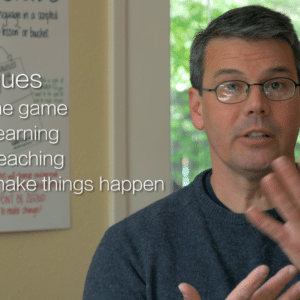
Bad things can happen when something goes Full; worse, when beyond Full. Extremely heavy rains in Tokoroa, New Zealand pushed the local drainage systems well over their Full levels, leading to this dangerous scene here. Stay safe when you’re around WAYK players who are Full, and unfill yourself when you have to! (Credit: Sarah Macmillan, Flickr, Creative Commons)
This is the second in a series of blog posts about how WAYK techniques can be applied to learning in everyday life. The first post is “Craig’s List.”
David Edwards, one of my fellow WAYK interns and Stanford alumni, is notorious for describing “full” in a way like this: “If you eat too much, you puke. If you learn too much, your brain pukes–all over the table, and it gets really sticky and messy and hard to clean up.” No truer words have been said in a game of WAYK. If you’re overwhelmed with foreign words and phrases, they start mixing with each other in your head in very bewildering ways; your vocabulary and syntax may come out garbled (you have a harder time putting phrases together; people have to pull you through every single step). Therefore, you should call Full and excuse yourself from the game to protect yourself–and your teammates–from this confusion.
(And if you’re reading this entry and feel you’re learning too much already, please get up and come back when you’re ready. Do this as often as you’d like and as often as you need to. I’ll be patient; don’t worry.)
In everyday life, one does–and should–call Full. When I jog and run around my neighborhood, I know that I need to catch a breath after about 10 minutes of continuous running (15 on a good day), so I stop occasionally, walk for about 5 to 10 minutes, then run some more once I regain my strength.
Technique “Full” takes this idea from daily life and applies it to learning by inverting a core principle of traditional education: in WAYK, students, rather than teachers, control how long they learn. As much as I’d like to say that Full can be applied everywhere in daily life, it can’t always be so. (Imagine getting up and leaving in the middle of class whenever you felt Full! I don’t think you’d want to ask your teachers for letters of recommendation in that case.) But Full can, of course, can be done in all other non-time-constrained situations. When I’m studying outside of lecture or section, I like to take breaks every so often so that I don’t feel overwhelmed by my work. The breaks help me solidify and secure the information in my head.
Notice that I mentioned that the amount of time I can run continuously without being exhausted isn’t constant. Depending on the task, the environment, and your mood, your Full capacity is very changeable, so it’s important to be able to gauge yourself accurately. More than that, if you’re not sure if you’re Full, you probably are. In that case, it’s better to call Full early and stay sane throughout a task rather than to avoid calling Full to the stage at which you keep doggedly working, go insane, and ruin what you’re working on.
I hope you took enough breaks reading this post! Get out and find some fresh air, go about your life, and come back next time for more WAYK goodness.




